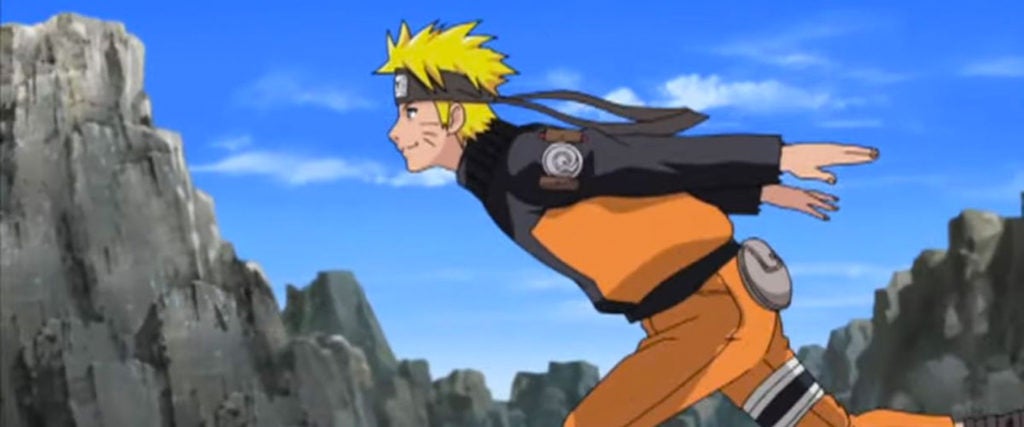Tears well up in my eyes when I think of the raid on Area 51. Life was simpler back then, when our chief concern was emancipating aliens and clapping extraterrestrial cheeks. It was the people against the government, and while the military threatened us with B-2 bombers, we had a compelling countermeasure: Naruto running.
While Naruto running gained recognition due to the raid on Area 51, for years, anime fanatics (read: me) have been replicating the running style of Naruto Uzumaki, the eponymous protagonist of the acclaimed Japanese manga and anime series Naruto. Throughout it, he and his ninja companions sprint at supernatural speeds with their arms locked straight and pointed back. This is Naruto running, and as promised on the indelible Storm Area 51 Facebook page, it would make you “move faster than bullets.”
Despite its nickname, this particular style of running is by no means unique to Naruto. It appears in many other animes, movies and video games, and Japanese Naruto runner Yuka Ando has made the news in recent years for her speed and success while employing the technique. “The word in Japanese is ninja bashiri, or ninja running,” explains Jonathan Clements, author of A Brief History of the Martial Arts. “It’s a type of movement that we first see cropping up in 1960s TV and is born out of the sight of a ninja, holding his scabbard on his back to keep it from bumping, his other hand extending either with the blade or ready to draw it. It’s specific to ninja, because samurai carry their swords on their hips. Modern audiences have come to associate that position with some element of ninja training, even if the ninja doesn’t actually have a sword anymore.”
In a sense, then, Naruto running as we know it now is perhaps a remnant of something slightly historical (although, it could also be a sly way to get out of fully animating the pumping arms of Naruto and his buds as they run at inhuman speeds). Then again, much of what we think we know about ninjas is all smoke and mirrors. “Most ninja lore, despite what hucksters tell you, dates from no earlier than the mid-20th century,” Clements explains. “The first real boom in ninja stories comes after the second World War, when the samurai aristocracy were discredited and left-wing authors and manga creators started celebrating the peasantry, invisible through much of history. It got a huge boost in the early days of television, when Cold War spy thrillers got a localized samurai-era twist. The word ‘ninja’ didn’t even turn up in a Japanese-English dictionary before 1974.”
Ninjas, in a way, have come to resemble characters like Robin Hood, and selling that image as historically accurate is mostly financially motivated. “There’s an entire industry invested in making ninja seem real, desperate to retcon any mention of assassins, scouts or spies in the historical record, and to claim that they were super-powered men in black (or orange),” Clements explains. “I’ve seen outrageous scams at work, ‘translations’ that push the word ninja into places it never was, illustrations that anachronistically shove ninja weapons into medieval manuals and even labels on pictures that misidentify kabuki stage-hands, who traditionally wear black, as ninja. Also, orange? Not a good camo color.”
All of which is to say, as sad as it makes an anime enthusiast like myself, Naruto running — and everything else these shows teach us about ninjas — is likely exaggerated or, perhaps more accurately, completely made up. Likewise, the main consensus from experts on the topic is that Naruto running is in no way a practical technique. “Ah yes, Naruto running,” says Nate Wallack, co-owner of Runner’s Den. “It’s an ancient technique practiced to this day by awkward teenagers everywhere. In fact, Naruto runners were the first to practice social distancing, although not necessarily by choice.”
“I think it’s a really good idea, and more people should adopt the practice,” says decorated ultramarathoner Dean Karnazes, sarcastically, before warning that Naruto running is a good way to fall on your face. “Did I mention my wife’s a dentist?”
“The only ‘practical’ element of ninja running would be if you had a sword on your back, and you were trying to stop it from getting tangled in your legs or making a noise as you ran,” says Clements. “Without a sword or a need to keep it quiet, you just look like an idiot and compromise your balance.”
To all of that, I say, eat my dust while I Naruto run away from you haters.

